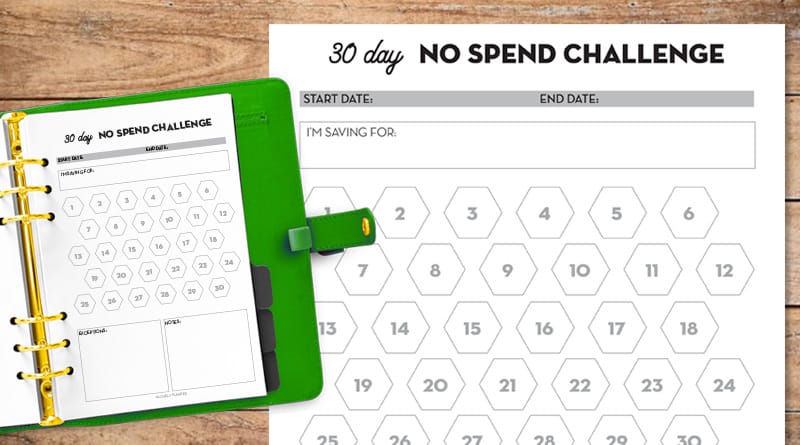If you’re looking to save money, become more mindful of your spending habits, and reach financial goals faster, the No Spend Challenge is a game changer. But how do you start? This is where a No Spend Challenge Planner comes in handy. With this tool, you can track your progress, stay motivated, and ultimately gain control over your finances.
In this comprehensive guide, we’ll explore what a no spend challenge is, how to create or use a no spend planner, and why incorporating a budget planner alongside it can double your savings. Let’s dive in!
What Is a No Spend Challenge?
A No Spend Challenge is a personal finance activity where you commit to spending no money on non-essential items for a set period. The duration can be a week, a month, or even longer, depending on your goals. The idea is to cut down on unnecessary purchases and save money by sticking to only the essentials—things like rent, groceries, and utility bills.
Benefits of a No Spend Challenge
- Increased Savings: The most obvious benefit is the money you save by cutting out non-essential purchases.
- Mindful Spending: It helps you distinguish between needs and wants, cultivating a more frugal lifestyle.
- Financial Discipline: The challenge improves your budgeting habits, making it easier to stick to financial goals.
Why You Need a No Spend Challenge Planner
Just like any goal, tracking your progress is crucial. A No Spend Challenge Planner allows you to document your daily expenses, set spending goals, and reflect on your habits. It serves as both a motivational tool and a tracker to ensure you stay on course.
Here’s how it helps:
- Accountability: Writing down your daily spending (or lack thereof) increases your commitment to the challenge.
- Goal Setting: You can set specific savings goals and work toward them by monitoring your progress.
- Reflection: Seeing your habits on paper helps you reflect on spending triggers and areas for improvement.
- Staying Organized: A planner makes it easy to keep track of bills, essentials, and any allowed spending categories during the challenge.
How to Create a No Spend Challenge Planner
- Choose Your Duration: Decide how long your no spend challenge will last. For beginners, starting with a week is manageable, while more experienced budgeters can aim for a month.
- List Essentials: Identify what you’re allowed to spend money on, like rent, groceries, and utility bills. Everything outside of these essentials should be off-limits.
- Set a Savings Goal: Determine how much money you aim to save during the challenge. Having a tangible number keeps you motivated.
- Track Your Progress: Every day, note whether you stuck to the no spend rule or if you had any slip-ups. Use the planner to jot down how you felt and what may have triggered a spending urge.
- Review Weekly: At the end of each week, reflect on your progress. Did you meet your savings goals? What can you improve in the upcoming week?
You can create your own no spend challenge planner with a simple notebook or use pre-made printables and templates available online.
Integrating a Budget Planner
While your No Spend Challenge Planner is great for short-term savings goals, incorporating a budget planner gives you a comprehensive picture of your finances. A budget planner helps you manage income, track essential expenses, and set long-term savings goals.
- Track Fixed Expenses: Use the budget planner to track ongoing expenses like rent, utilities, and debt payments.
- Set Monthly Budgets: Plan for essentials like food, transportation, and healthcare.
- Monitor Savings: A budget planner allows you to calculate how much you’re saving during the challenge and adjust your spending habits for long-term financial health.
Common Mistakes to Avoid
- Not Defining Essentials Clearly: One mistake people make during a no spend challenge is not clearly defining what counts as an essential. Stick to a strict list, and avoid justifying unnecessary purchases.
- Skipping the Reflection Process: Reflection is key. At the end of each week, evaluate your progress, note any spending triggers, and make adjustments for the following week.
- Not Having a Savings Goal: Without a savings goal, it’s hard to stay motivated. Set a tangible number for how much you want to save during the challenge.
Conclusion: Take Charge of Your Finances with a No Spend Challenge Planner
Starting a No Spend Challenge is a fantastic way to kickstart your savings and build better financial habits. With the right No Spend Challenge Planner and budget planner, you can monitor your progress, stay accountable, and reach your financial goals faster. Whether you’re trying to save for a big purchase, pay off debt, or simply become more mindful about your spending, this challenge will help you get there.
By using a planner, you’re not just saving money—you’re learning valuable lessons about financial discipline and responsible spending that will last well beyond the challenge. Ready to get started?
Take control of your finances today with a no spend challenge!
FAQs about No Spend Challenge Planner
1. What should I include in my No Spend Challenge Planner?
Your planner should include the duration of the challenge, your savings goal, a list of essential expenses, and a daily log for tracking your spending habits.
2. How long should a no spend challenge last?
The duration depends on your financial goals. A week is a good starting point, while a month-long challenge will yield more significant savings.
3. Can I use a digital planner for my no spend challenge?
Absolutely! You can find many free and paid digital budget planners and no spend challenge planners. Apps like Mint, YNAB, or even Google Sheets can serve as effective tools.
4. What if I slip up during the challenge?
Don’t worry! The goal is progress, not perfection. Reflect on what caused the slip-up and continue with the challenge. Each step toward better financial habits is a win.
5. Can a no spend challenge help me get out of debt?
Yes, participating in a no spend challenge can free up extra money to put toward debt payments, helping you reduce your debt faster.








Leave a Comment